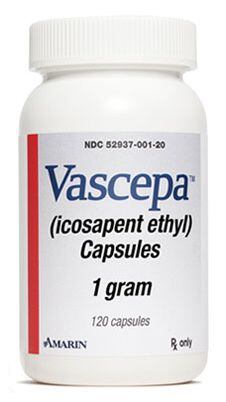Speaking to NutraIngredients-USA and FoodNavigator-USA after securing a $2m LEED (Low Emissions Energy Development) grant from the Australian government, Aurora VP of product management Jim Astwood said the long chain omega-3 fatty acid EPA is gaining momentum in its own right.
FDA approval of Vascepa for reducing high TGs has raised market awareness of EPA-only oils

While most of the scientific research on omega-3s has been conducted on DHA or combinations of EPA and DHA, there is a growing body of literature looking at EPA alone, said Astwood, and Aurora is seeing commercial interest in its ultra-high purity algal-EPA from firms producing pharmaceuticals, dietary supplements and nutritional food and beverages.
“The FDA recently approved Amarin [Vascepa, Amarin Corporation’s triglyceride-busting patented synthetic EPA] for pharma applications so there is a lot more recognition of the standalone EPA-story in the marketplace now", he added.
While standard fish oil typically has around 18% EPA and 12% DHA, meaning 30% of the oil comprises EPA/DHA, Vascepa has more than 96% EPA.
Aurora is “shooting at a range of 60-80% EPA” he said, although the plan will be to "offer a range of formulations and potencies to meet different market requirements".
First phase of commercial facility will include 100 hectares of algae ponds
The firm, which claims it will have the capability to produce larger quantities of higher grade omega-3s more efficiently than any of its rivals, has a pilot facility in Karratha, Western Australia, which it says has “consistently hit established production goals of 12-15 tons of algal biomass per month [2-2.5 metric tons of algal biomass per acre, per month].
The demo facility, consisting of six one-acre open ponds, is a prelude to a full-scale facility set to break ground in 2014 that will consist of 100 hectares of algae ponds capable of producing up to 600t of algal biomass per month and scalable to 2,000 hectares.
The site will also include processing facilities to transform the biomass into products including EPA, high-quality proteins for the human nutrition market, fish food and biofuel.
Aurora can produce 40 times as much protein per unit area as soy beans

Unlike algal omega-3 market leader DSM, Aurora’s proprietary strains of marine algae thrive in hot, dry climates and feed on nothing but sunlight and waste carbon dioxide from nearby industrial emitters, a carbon neutral to negative process, said Astwood.
Because its algae is grown in seawater and thrives in hot, dry weather, Aurora is also able to use arid land unsuitable for other forms of agriculture and has a water requirement less than 1% of that used to grow similar products from soy beans, he claimed.
It is also capable of producing 40 times as much protein per unit area as soy beans, he said, making it very attractive to companies in the natural foods, specialty and sports nutrition arena looking for high quality sustainable alternatives to dairy proteins.
New entrants to the algal ingredients market
While the algal ingredients market remains dominated by Martek (now part of DSM) and Lonza, a new breed of companies has recently entered the fray including Aurora, BioProcess Algae, Renewable Algal Energy (RAE), Algae Biosciences and Solazyme Roquette Nutritionals (SRN).
SRN is probably the most advanced having launched its first products earlier this year, but is not going after the algal omega-3 market, focusing instead on food and supplement manufacturers with its lipid-rich whole algalin flour Almagine and high-quality protein ingredient Altein.
The others, meanwhile, are steadily ramping up capacity to produce everything from EPA to biofuels.
Aurora, RAE and AlgaeBio make their products using algal species that grow via photosynthesis in salt water benefiting from year-round sunlight, while SRN grows its algae via a heterotrophic (without sunlight) process in big vats to which nutrients are added.
Meanwhile, BioProcess Algae grows its algae on proprietary biofilms fed with waste heat and carbon dioxide from co-located ethanol production facilities.
However, the scale of Aurora’s planned operation was far superior to BioProcess’s facilities, claimed Astwood.
“I suspect we are multiple years ahead of them in terms of scale up.”
